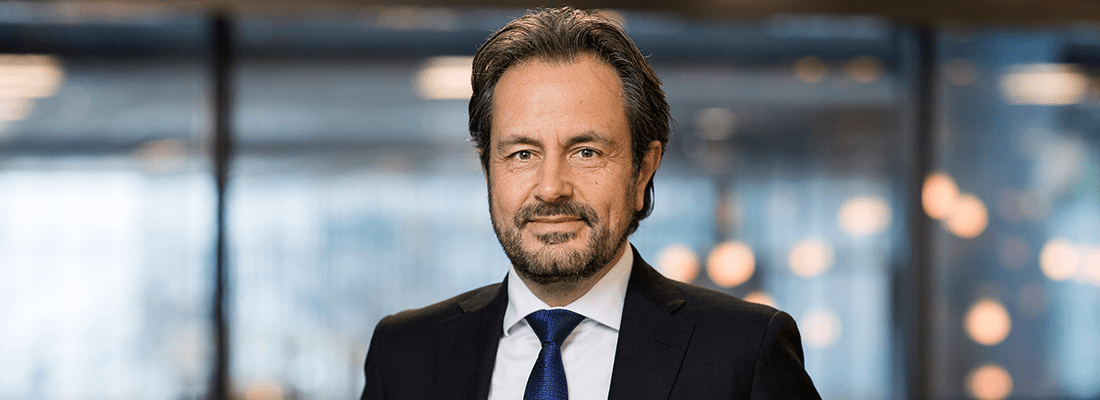SPEEDING UP THE MOBILITY TRANSITION: Carlo van de Weijer, TU Eindhoven
With the continuous growth of the population and ongoing urbanization there are numerous mobility challenges. Sustainability, safety and societal impact are amongst our daily concerns. We need to speed up the mobility transition to keep up with the fast changing global dynamics, which requires inventive approaches and better solutions. In this series we share inspiring and innovative cases from all over the world. Carlo van de Weijer leads the smart mobility research department of the Eindhoven University of technology. How does he speed up this mobility transition?
How I speed up the mobility transition? It is my mission to exchange knowledge on mobility innovations to improve road safety and the environment. To me these are the most important challenges when it comes to mobility. Many of the traffic casualties could have been prevented if technology that is already developed and on the shelf had been applied.
But we are either too slow to implement new developments or, even worse, we just did not know about their existence. I read too many news items about people who lost their lives during a car accident because they ended up on the wrong side of the road or drove into another car in a traffic jam. Despite the fact that we know about the latest technologies like sensors that alarm when the car is too close to the rail, another car or to the road markings. Thanks to these kind of technologies, many casualties caused by accidents like these could have been prevented.
-‘We should invest in making traffic safer before we add capacity’-
Yet, we prefer to invest in new highways and railways, because we are afraid of more traffic jams. But adding more capacity just attracts more traffic and, even more important: the societal cost of congestion is much lower than the impact of accidents. We should first invest in making traffic safer before we add capacity.
The European Union is preparing legislation to make a large list of safety systems mandatory on every car by 2021. But also cars that are already on the road can be equipped by retrofit safety systems. I installed a camera plus software in my 21 year old car. It warns me when I am distracted and alerts me in many cases before dangerous situations occur. It would cost around € 1-2 billion to make sure all the cars in the Netherlands are provided with the same safety hardware. That is a lot of money, but it will prevent so many casualties that these cost would be recuperated in no-time. Not to mention the huge societal impact through safer traffic.
-‘Having accurate traffic information gives people the incentive to change their travel behavior, travel time or routing’-
Aside from improving road safety, smart mobility also helps in solving congestion problems. Ten years ago we had no idea what so ever how long our journey would take. We would end up in a traffic jam without knowing its duration. TomTom came up with a solution that gives insight into real-time travel times. Having accurate traffic information gives a lot of people the incentive to change their travel behavior, their travel time or routing. Or they even decide to travel by train or bicycle. It is the combination of perception, behavior and smart solutions that can make real impact.
In the Netherlands we used to make use of a lot of road signage to inform and change behavior. Yet with cars becoming smarter we see more of this functionality move from the road-side to in-car solutions. In principle, smart mobility stands for smart vehicles on a relatively modest, basic and decluttered infrastructure. I work a lot with ministries in developing countries that can leap-frog on this development; just as they skipped the land lines and used mobile phones directly, they can also benefit from the new technology to make their traffic much safer on relatively short term, without massively investing in heritage technology that is not really adding value anymore. They can solve it much cleverer instead of repeating our mistakes.
-‘The bicycle is a win-win-win modality: cheap for the government, healthier and uses scarce public space.’-
More and more city inhabitants are grabbing a bike which on itself is a win-win-win modality: cheap for the government, healthier for people and a very effective way of using scarce public space. More and more companies are helping cities in embracing cycling by smart infrastructure device, but also via the use of ITS technology. In Utrecht an electronic sign informs you if you will be able to make the green light at your pace a couple of meters before.
By doing research on and sharing knowledge by writing about these topics, I hope I can add value and help to speed up the mobility transition. I know I am not supposed to advertise in this article, but since it’s my mission to share knowledge when it comes to mobility: please visit and check out the latest mobility technology at one of the Intertraffic trade shows. I believe that for every minute we manage to speed up the transition towards safe and sustainable mobility, we save one traffic casualty.
Carlo van de Weijer is director of the smart mobility research department of Eindhoven University. He also advises companies such as TomTom or Siemens. And he is member of the Advisory Board of Intertraffic.
Share your story
Do you have an innovation, research results or an other interesting topic you would like to share with the professionals in the infrastructure, traffic management, safety, smart mobility and parking industry? The Intertraffic website and social media channels are a great platform to showcase your stories!
Please contact our Sr Brand Marketing Manager Carola Jansen-Young.
Are you an Intertraffic exhibitor?
Make sure you add your latest press releases to your Company Profile in the Exhibitor Portal for free exposure.





